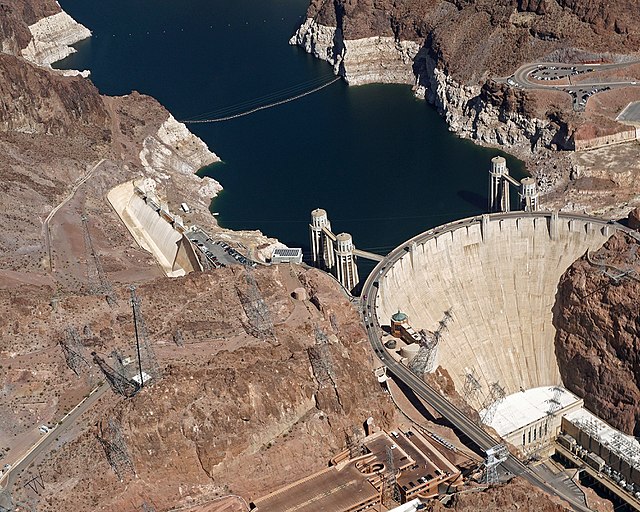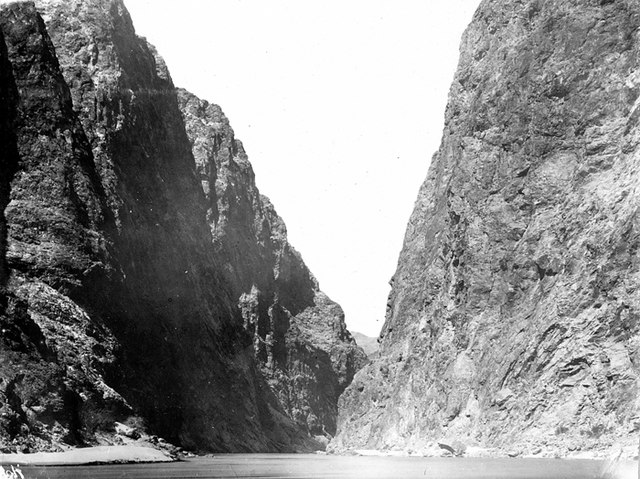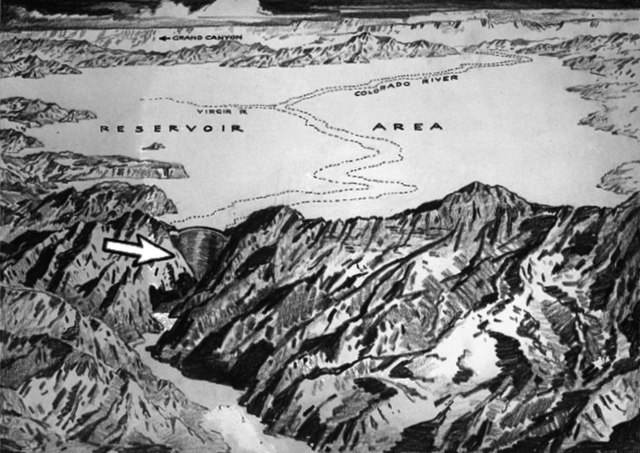Lake Mead is a reservoir formed by the Hoover Dam on the Colorado River in the Southwestern United States. It is located in the states of Nevada and Arizona, 24 mi (39 km) east of Las Vegas. It is the largest reservoir in the US in terms of water capacity. Lake Mead provides water to the states of Arizona, California, and Nevada as well as some of Mexico, providing sustenance to nearly 20 million people and large areas of farmland.
Satellite imagery from Landsat 8 of Lake Mead in July 2022 during the 2020–23 North American drought
Elwood Mead
Aerial view of Lake Mead in August 2010.
Lake Mead from space in November 1985: North is facing downward to the right. The Colorado River can be seen leading southward away from the lake on the top left. The Hoover Dam is located where the river meets the lake.
Hoover Dam is a concrete arch-gravity dam in the Black Canyon of the Colorado River, on the border between the U.S. states of Nevada and Arizona. Constructed between 1931 and 1936, during the Great Depression, it was dedicated on September 30, 1935, by President Franklin D. Roosevelt. Its construction was the result of a massive effort involving thousands of workers, and cost over 100 lives. In bills passed by Congress during its construction, it was referred to as the Hoover Dam, after President Herbert Hoover, but was named the Boulder Dam by the Roosevelt administration. In 1947, the name Hoover Dam was restored by Congress.
Hoover Dam by Ansel Adams, 1941
Image: 2017 Aerial view Hoover Dam 4774
River view of the future dam site, c. 1904
Sketch of the proposed dam site and reservoir, c. 1921








